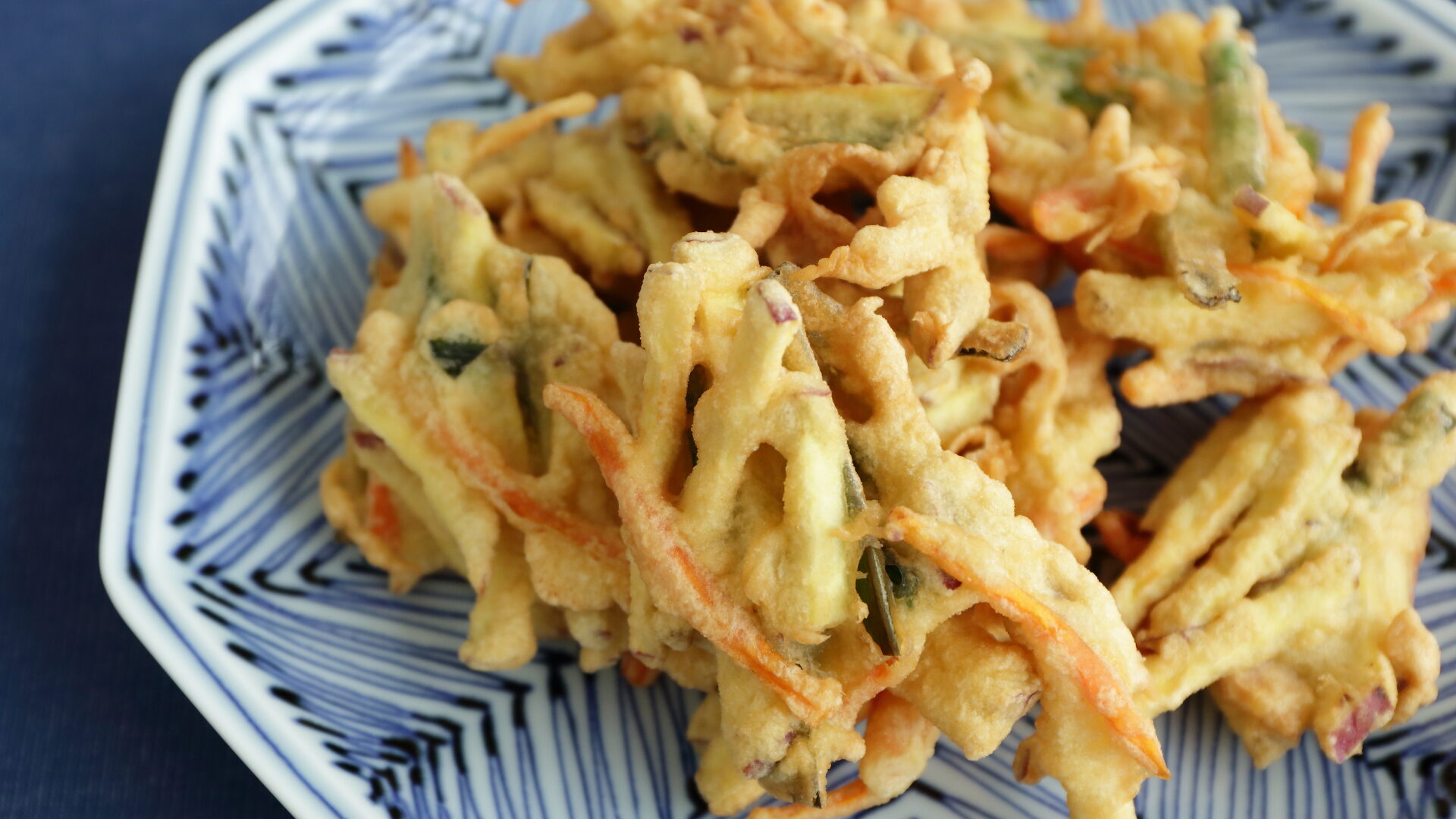
Hey there, foodies! Let’s head down to Kagoshima and talk about “Gane,” a local dish that really shows off the region’s love for sweet potatoes. These aren’t just any sweet potato fritters; they’re a bit chunky, a little sweet, and full of local flavor. The name itself is a fun nod to their appearance!
Dish Name: Gane
- Region / Location: Kagoshima Prefecture (throughout the prefecture).
- Primary Area of Tradition: Throughout Kagoshima Prefecture.
- Main Ingredients: Sweet potato, carrots, Chinese chives (nira), wheat flour.
How It’s Eaten / Served
Gane is made by cutting sweet potatoes and carrots into thick matchsticks and chopping Chinese chives to a similar length. These are then mixed with a batter made from wheat flour, glutinous rice flour, sugar, egg, light soy sauce, salt, and water. The mixture is shaped into patties, resembling crabs, and deep-fried until golden brown. A key point in frying is to spread the ingredients with chopsticks while frying. Gane is enjoyed year-round as a side dish, snack, appetizer, or accompaniment to drinks. It’s also served during New Year’s celebrations and at ceremonial occasions like funerals and weddings.
Cultural Background and Preservation
Kagoshima Prefecture is known throughout Japan for its sweet potatoes, which are a key ingredient in Gane. Kagoshima boasts the highest sweet potato production in Japan. The region’s warm climate and unique soil, consisting largely of “Shirasu” (volcanic ash), are well-suited to sweet potato cultivation. While other crops may struggle with the soil and frequent typhoons, sweet potatoes thrive because they grow underground, protected from storm damage. There are various theories about how sweet potatoes came to Kagoshima, but one popular story is that in 1698, Hisamoto Tanegashima, the lord of Tanegashima Island, brought sweet potatoes back from Okinawa. Later, in 1705, Riemon Maeda, a sailor from Yamakawa, cultivated sweet potatoes and shared them with his neighbors, leading to their widespread popularity throughout Kagoshima. Sweet potatoes became an important food source, especially for those facing hardship, and were even called “Koko-imo” (filial piety potato). Sweet potatoes are also used to feed the famous Kagoshima Kurobuta (black pork) and are a primary ingredient in the region’s Imo-shochu (sweet potato spirit). With such a strong connection to the region’s food culture, it’s no surprise that Kagoshima has many sweet potato dishes, including Gane.
The name “Gane” comes from the Kagoshima dialect word for “crab,” because the fritters are said to look like crabs. Gane is characterized by its sweet flavor, often with a generous amount of sugar added. The ingredients and batter vary slightly from region to region and family to family. Some areas use buckwheat flour in the batter or brown sugar for sweetness.
Gane is an easy dish to make with readily available ingredients, so it’s still commonly prepared in homes. You can also find it in supermarket delis and at roadside rest stops. It’s a popular item on school lunch menus too.
Additional information:
- Shirasu (シラス): Volcanic ash soil common in Kagoshima.
- Kurobuta (黒豚): Black pork, a famous product of Kagoshima.
- Imo-shochu (芋焼酎): Sweet potato spirit, a distilled beverage.
- Nira (ニラ): Chinese chives.
The information about regional cuisine featured on this website (Piggy's Grandma of Japan) is summarized and adapted from the Ministry of Agriculture, Forestry and Fisheries of Japan (MAFF) website, "Our Regional Cuisines"Additional commentary is provided based on the unique experiences and perspectives of the site's editors.
The copyright for the original content regarding regional cuisine belongs to the Ministry of Agriculture, Forestry and Fisheries of Japan.
The summaries and adaptations published on this site are intended for informational purposes only. Piggy's Grandma of Japan does not guarantee the accuracy or completeness of this information. For the most accurate and complete details, please refer to the original pages on the MAFF website.

